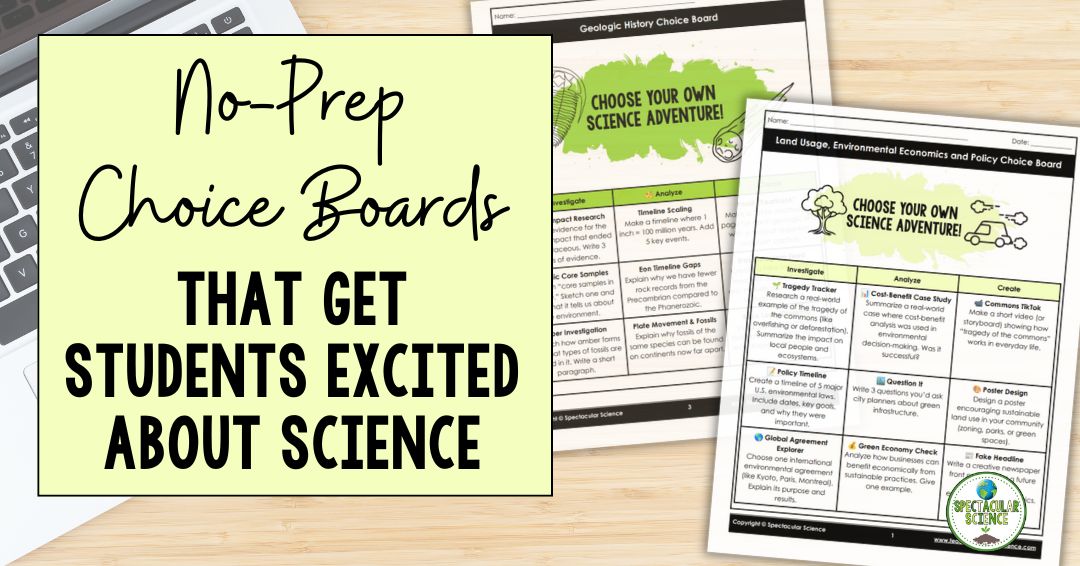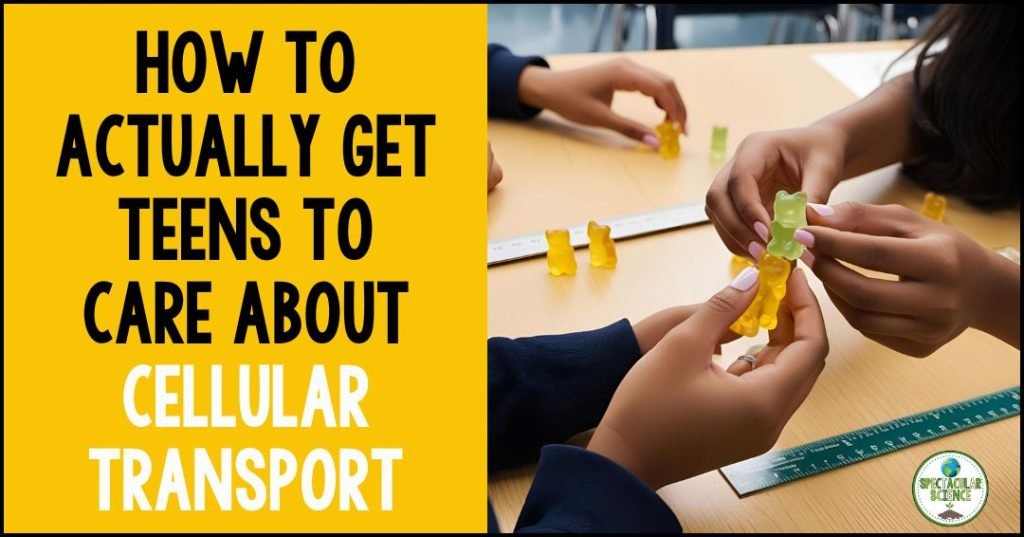
Let’s be real—getting students excited about how water moves through cell membranes isn’t always a walk in the park. Mention “osmosis” or “cellular transport” and you might see some blank stares or a few eyes glaze over.
But when you build the right flow (no pun intended), this topic goes from “meh” to “whoa” pretty quickly. With the right pacing, a few engaging visuals, and hands-on labs that students actually talk about afterward, osmosis and diffusion can become one of the most memorable parts of your biology or life science unit.
Below is the structure I use in my own classroom to make this happen—with plenty of movement, real-life connections, and just enough structure to keep things clear.
If you want to save time planning, I’ve bundled everything into a ready-to-go Cellular Transport Unit that includes all the lessons, labs, and assessments below—feel free to check it out!
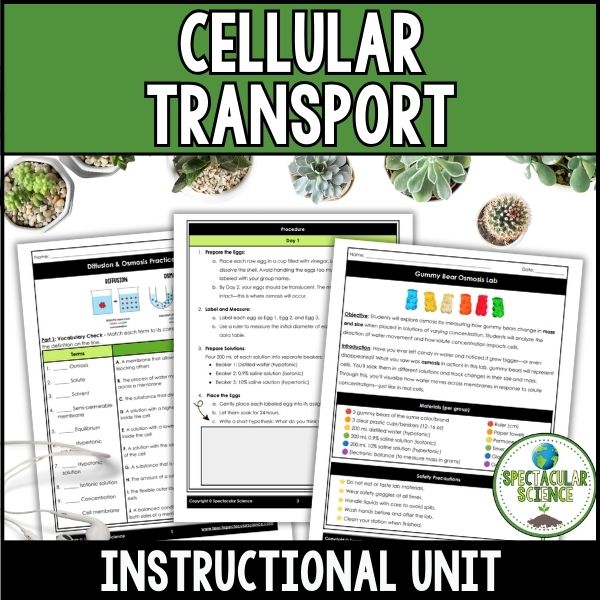
Week-at-a-Glance: Your Cellular Transport Game Plan
Days 1–2: Set the Foundation
– Cellular Transport Presentation & Guided Notes (45 min)
– Diffusion & Osmosis Practice Packet (20 min)
We kick things off with one big essential question: How do cells maintain balance and get what they need to survive?
The first two days are all about breaking down cellular transport—without overloading students with vocab right away. We use guided notes to explore diffusion, osmosis, and active transport with visuals and analogies that actually stick.
If you’re looking for a ready-made intro, my Cellular Transport Presentation & Notes slides break down these concepts clearly and come with guided note-taking to help students stay focused.
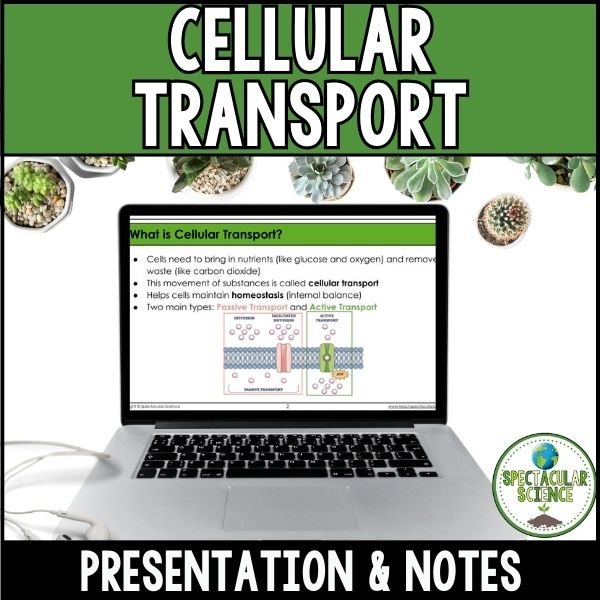
Once they’ve got the basics, we move into a short practice packet that challenges them to think through situations they’ve experienced before—like why skin wrinkles in water or what happens to a raisin in juice.
It’s low-stakes but super effective for making sure those concepts land.
Days 3–4: Egg-citing Osmosis in Action
– Egg Osmosis Lab (2 Days)
This is where it gets hands-on. The egg osmosis lab lets students literally see water movement across a semi-permeable membrane.
Shells come off, solutions go in, and the dramatic size changes of the eggs become the perfect model for understanding what happens to cells in different environments.
This lab is visual, weird (in the best way), and memorable. Plus, it hits our second essential question: How does osmosis affect cells placed in different environments?
If you want to try it out without all the prep hassle, I’ve put together an Egg Osmosis Lab resource with detailed instructions and student worksheets.
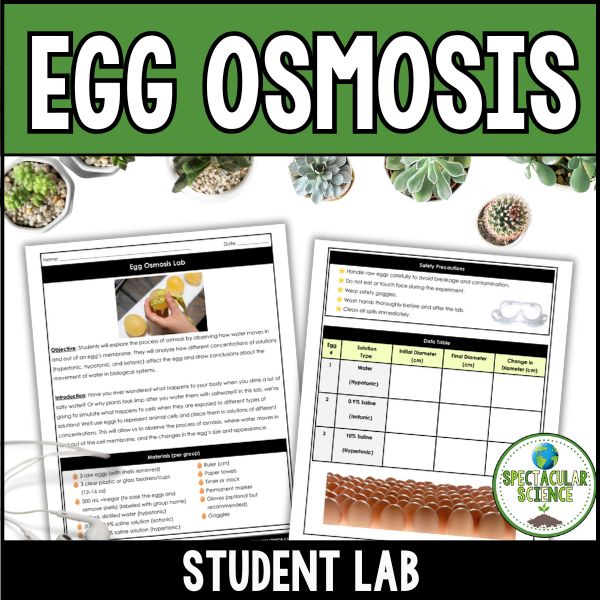
Days 5–6: Gummy Bear Osmosis Lab
– Gummy Bear Osmosis Lab (2 Days)
We double down on the concept with a second lab that’s more accessible and way less fragile. Gummy bears offer that same satisfying before-and-after transformation—and students love tracking mass, measuring volume, and comparing results.
Not only is it fun, but it reinforces the idea of concentration gradients, solution types (hyper-, hypo-, and isotonic), and membrane permeability in a way a diagram alone never could.
Pro tip: Let students brainstorm other candies to try if you have time to extend. It gets competitive fast.
For a no-fuss setup, check out my Gummy Bear Osmosis Lab—it’s a student favorite!
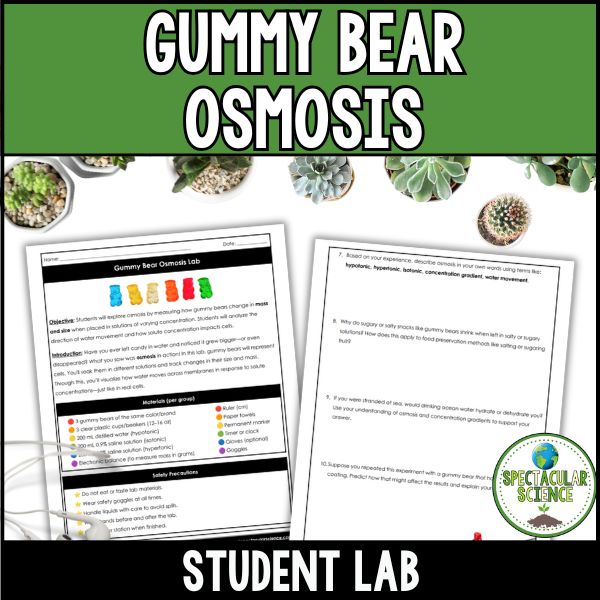
Day 7: Real-World Connections & Quick Review
– Applications of Osmosis in Real Life (30 min)
– Cellular Transport Reinforcement Worksheet (15 min)
– HW: Study for Quiz
Now that they’ve seen osmosis in action, it’s time to connect it to why it matters. We dig into real-life examples like:
- Why salt keeps food from spoiling
- How IV fluids work
- What happens to your plants when you water them with tap vs. salty water
This part sparks amazing questions—students begin spotting osmosis everywhere, from cooking to hospitals to gardening.
We wrap the day with a quick worksheet to reinforce key terms and help students lock in those definitions before the quiz.
Day 8: Let’s See What They Know
– Cellular Transport Quiz (30 min)
By now, they’ve learned it, seen it, applied it, and talked about it. The quiz gives them a chance to show what they know—covering everything from diffusion and osmosis to active transport and the role of the membrane in homeostasis.
And the best part? They’re not just guessing definitions—they’re thinking like scientists.
Final Thoughts
Osmosis and diffusion don’t have to be dry. When students get to see the science come to life, they’re way more likely to stay curious—and way less likely to forget it after the unit ends.
This 8-day pacing is all about structure and engagement. With just the right mix of direct instruction, interactive practice, and show-stopping labs, you’ll turn one of biology’s trickiest concepts into something students actually look forward to.
If you want a little help putting it all together, the Cellular Transport Unit bundle has everything you need—lessons, labs, worksheets, and assessments. No stress, no scrambling!
Let me know how it goes in your classroom—or whether your students were Team Egg or Team Gummy Bear.
Drop your stories in the comments or tag me on IG—I always love hearing from fellow science teachers!

















